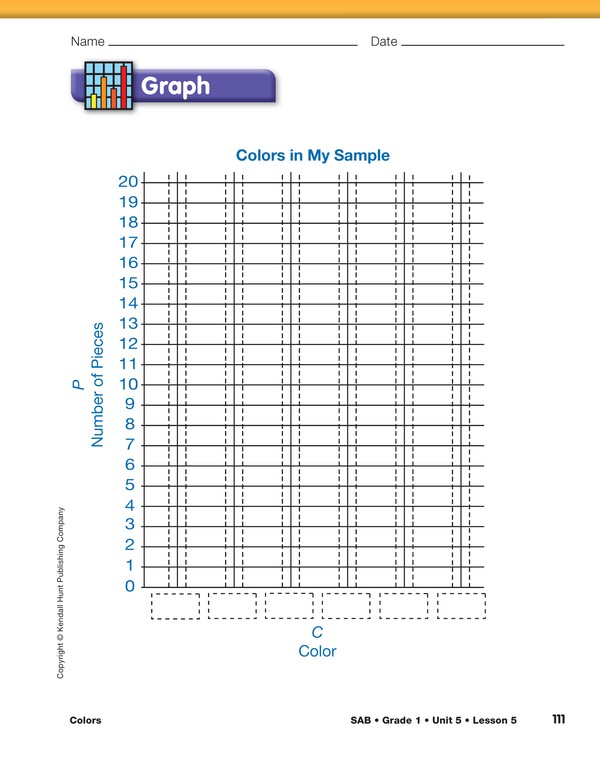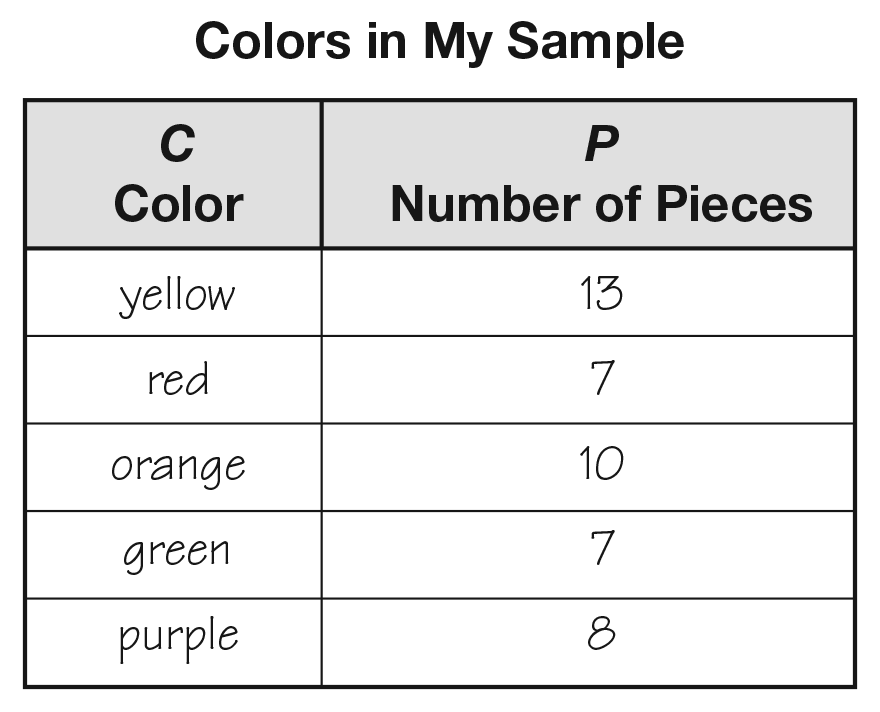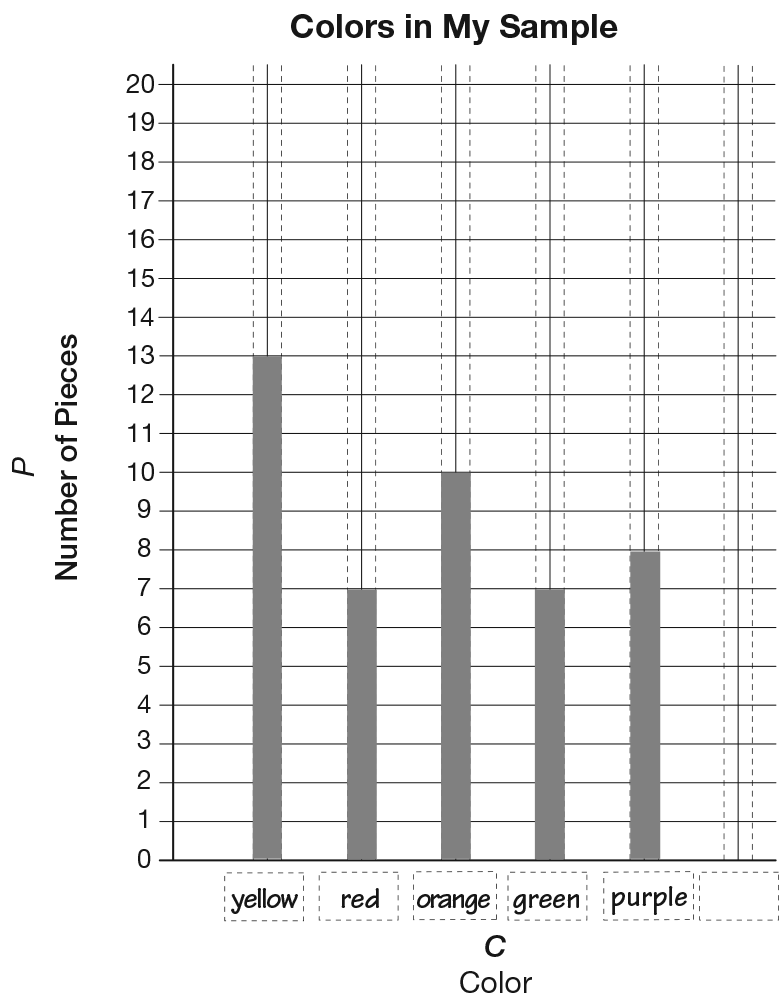Counting by Fives
Est. Class Sessions: 3–4Developing the Lesson
Part 2: Investigating the Samples
Collect Data. Walk around the room and let each student pair take a scoop of cereal from the bowl. Have the pairs collect the data on their own samples. Remind students to count the total, sort by color, count the colors, and record their data on the data table. Tell them they can look back at their pictures to remember these important steps. A completed sample data table is in Figure 3.
Graph Sample Data. The third step in the TIMS Laboratory Method is to use the information in the data table to create a graph. Make clear to students that a graph is like a picture of all the information they collected by counting the colors. It is a picture of what is on their data table. This is a key concept in this activity. See the Content Note.
Display and direct students to the bar graph from the Graph section of the Colors Lab pages.
Ask:
Using the display of the graph, fill in the names of the colors along the horizontal axis as students prepare their own. Use the totals recorded on your sample data table to demonstrate constructing a bar graph. Show students that the numbers on the data table tell how many spaces to color on the graph. Have students count with you as you color the bars on the graph. Point out that you are coloring between the dotted lines. See Figure 4. Draw attention to the fact that the bar of each color will go up only as far as the number for that color on the table.
Ask:
Interpret Sample Bar Graph. Ask students to use the graph to answer questions about the cereal sample, solve addition problems, and make predictions and generalizations about the colors in the cereal.
Ask:
Graph Data. Following the demonstration, have students complete their own bar graphs on the Colors Lab pages.
After students have completed their bar graphs, ask:
If no one suggests it, tell students they are going to
put all of their data together to make a class graph.
From the class graph, they will be able to determine
the most common color. Distribute one 10-unit strip
from the Color Strips Master for each color, plus a
few extras, to each student pair. Show students the
Colors in Our Class graph that you prepared and displayed
before the lesson. See Materials Preparation.
Ask students to use either their data tables or graphs to color the strips to show the number of pieces of each color.
Tell students to use a different strip for each cereal color in their sample and color the same number of spaces as pieces of that color in their sample. For example, if they have eight pieces of yellow cereal in their sample, eight spaces are colored yellow on a 10-unit strip. If students have more than ten pieces of a color, two 10-unit strips are taped together and then colored. The extra uncolored spaces should be cut off from the colored strip.
Collect the strips as students complete them. Attach the color strips to the Colors in Our Class graph you prepared while students work on the Explore section in Part 3 or before the next class session.
Glue or tape each color strip above the appropriate color label. Make sure the strips are taped above others of the same colors and that the strips touch each other. Leave no empty spaces and remember to leave the vertical axis unnumbered.



















